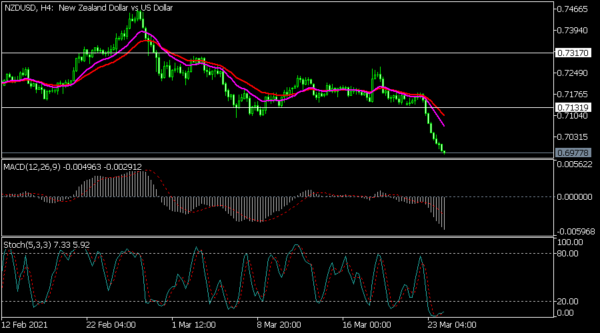The price of crude oil declined in the overnight session as the market reflected on the latest US inventory numbers. According to the American Petroleum Institute (API), the number of inventories rose by more than 2.9 million barrels last week after falling by more than 1 million barrels a week before. Analysts were expecting the inventories to fall by more than 900k barrels. The Energy Information Administration (EIA) will publish its inventory numbers later today. Analysts expect the official numbers to show that the inventories declined by more than 272k barrels.
The New Zealand dollar declined sharply, continuing the trend that has been going on for the past few weeks. The currency declined even after better trade numbers from New Zealand. According to the country’s statistics bureau, total exports increased from more than N$4.2 billion in January to more than N$4.47 billion in February. In the same period, total imports fell from more than N$4.85 billion to N$4.29 billion. This led to the total trade surplus to increase to N$181 million from a deficit of N$647 million.
The economic calendar will have several important reports today. In the UK, the Office of National Statistics (ONS) will publish the latest consumer price index (CPI) data. Analysts polled by Reuters expect this data to show that the overall CPI increased from 0.7% in January to 0.8% in February. They see the core CPI increasing from 1.4% to 1.5%. The ONS will also publish the latest retail price index (RPI) and the producer price index (PPI). Other important numbers will be the flash global manufacturing and services PMIs and the US durable goods orders. The Fed chair and Janet Yellen will testify for the second day in congress.
NZD/USD
The NZD/USD pair continued to decline sharply in the morning session. It fell to 0.6977, which was the lowest level since November 25 last year. On the four-hour chart, the pair has moved below the neckline of the giant head and shoulders pattern it has been forming. It has also moved below all moving averages while the price is along the lower line of the Bollinger Bands. The MACD and Stochastic Oscillator have also declined. Therefore, the path of least resistance for the pair is lower.
EUR/USD
The EUR/USD pair declined to a low of 1.1845 as Jerome Powell and Yellen testified before congress. It fell to an intraday low of 1.1835, the lowest level since March. On the four-hour chart, the pair moved below the 25-day and 15-day EMAs. It has also moved below the neckline of the double-top pattern at 1.1880. The signal and main lines of the MACD are below the neutral line. Therefore, the pair may keep falling, with the next target being at 1.1800.
XBR/USD
The XBR/USD pair declined to an intraday low of 60.25 in the overnight session. On the four-hour chart, the pair remains below the moving averages and the envelopes indicator. The commodities channel index (CCI) has also moved above the oversold level. The pair may keep falling as bears attempt to move below the support at 60.00.
















